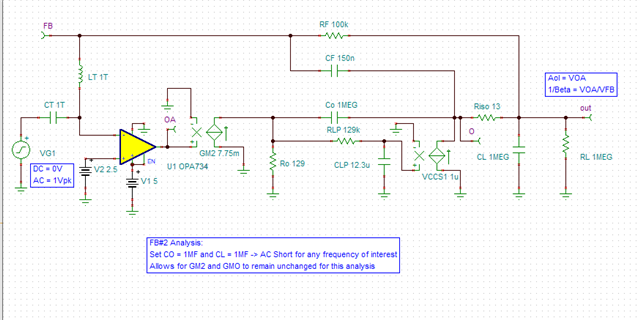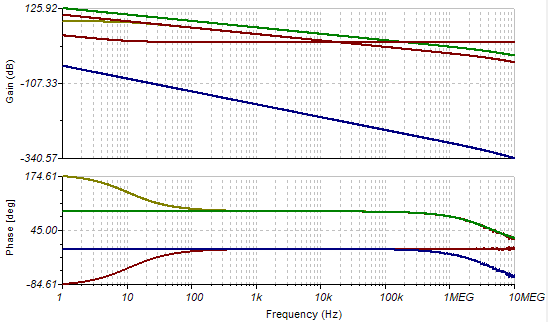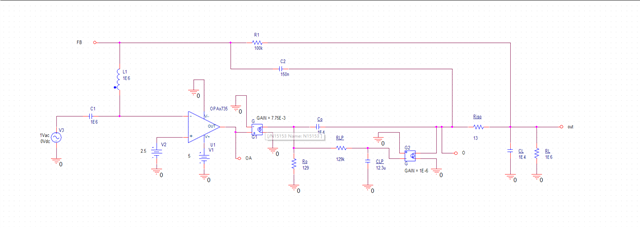Other Parts Discussed in Thread: PSPICE-FOR-TI, TINA-TI
Tool/software:
have been learning Tim Green's Stability for Op Amps serise articles for weeks. Now I have a problem when I simulate circuit in his part10 article.Circuit schametic as below,
I input same circuit,and peform a AC analysis,results as below,
FB#2 Analysis AC Circuit CMOS RRO.TSC

What confuse me is that at high frequency,AC amplitude seems to be fluctuating rather than a smoth line.What's wrong with it?
I also input a same circuit in Pspice and perform a bias analysis simulation,as below,

But it's annoying that simulation is stuck at "Starting pseudo-transient algorithm",I revise circuit a few times but I could find a proper circuit to make it work as long as two VCCS exists. I hope someone could offer some advise.
Question 1:Why there is amplitude fluctuation at high frequencies in Tina?
Question 2:Why same circuit as above couldn't peform a bias analysis in Pspice?




